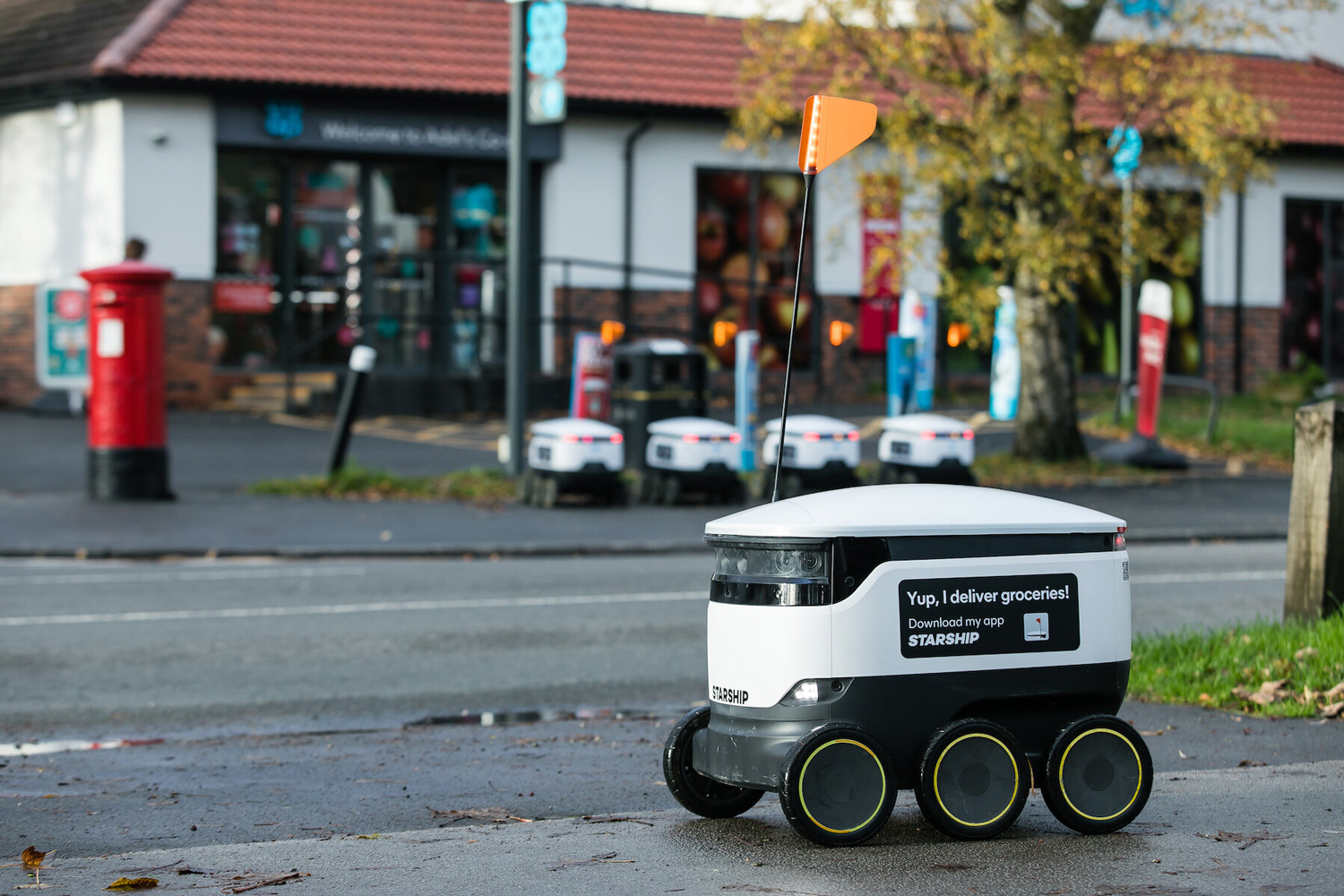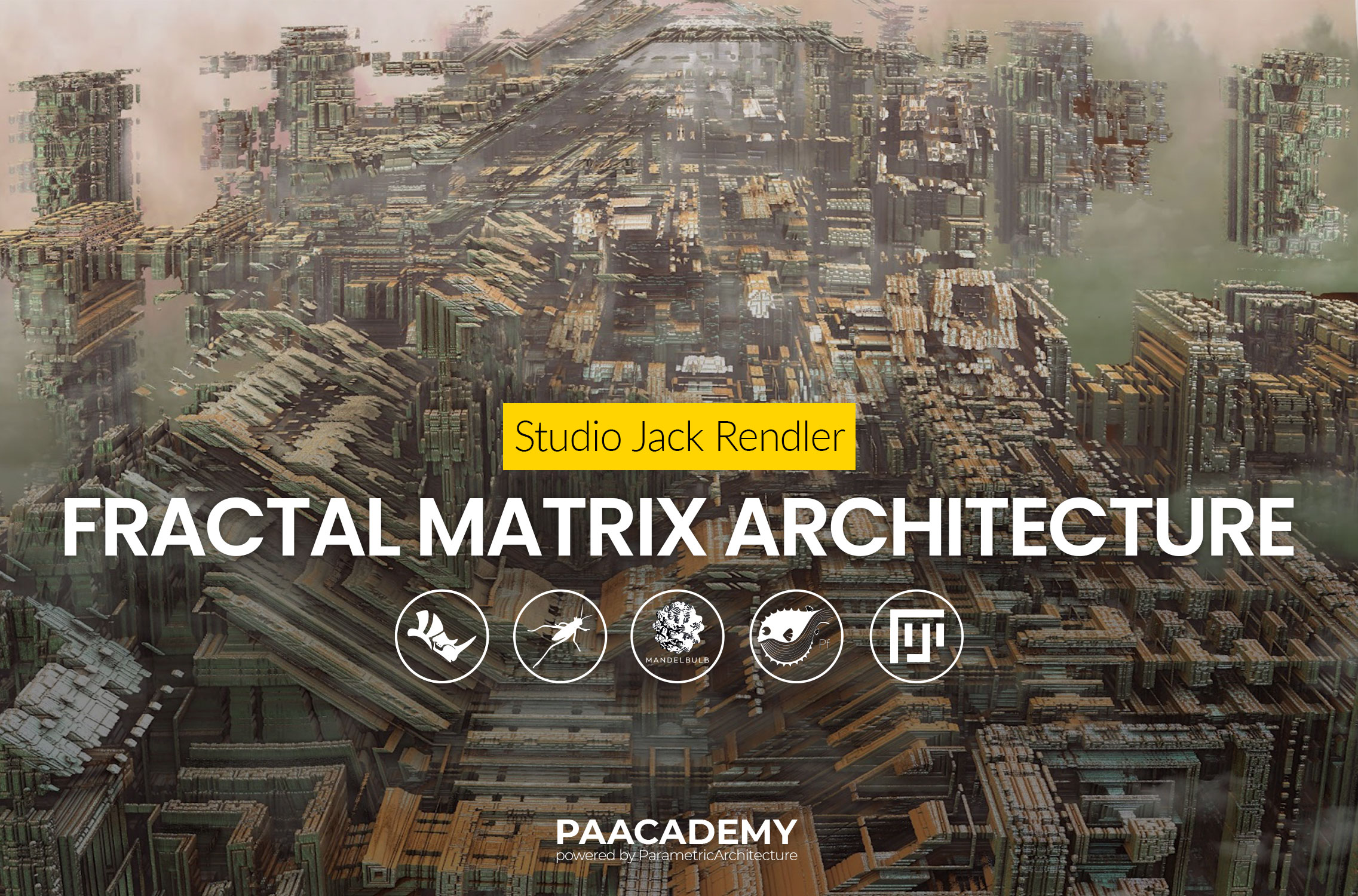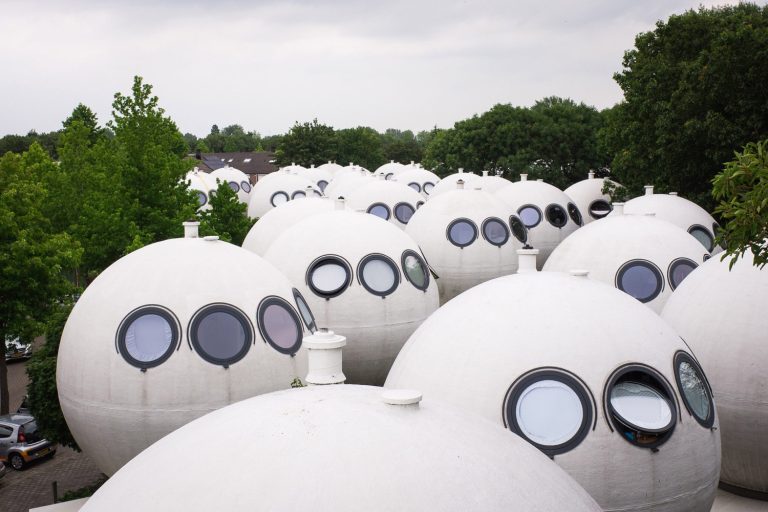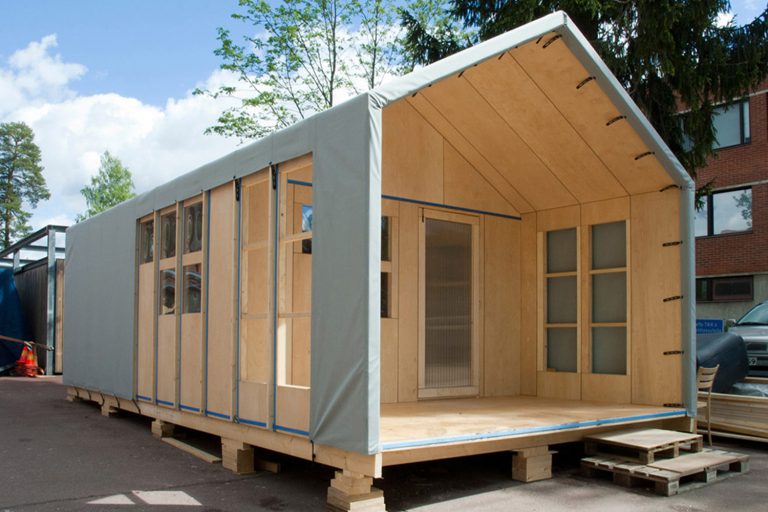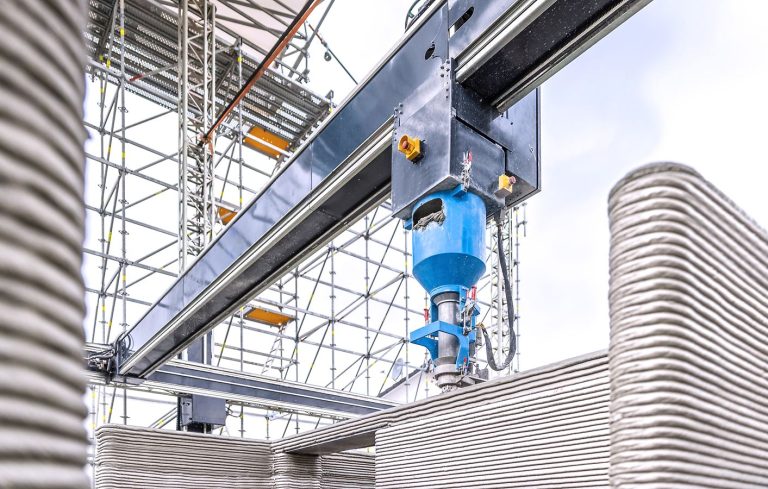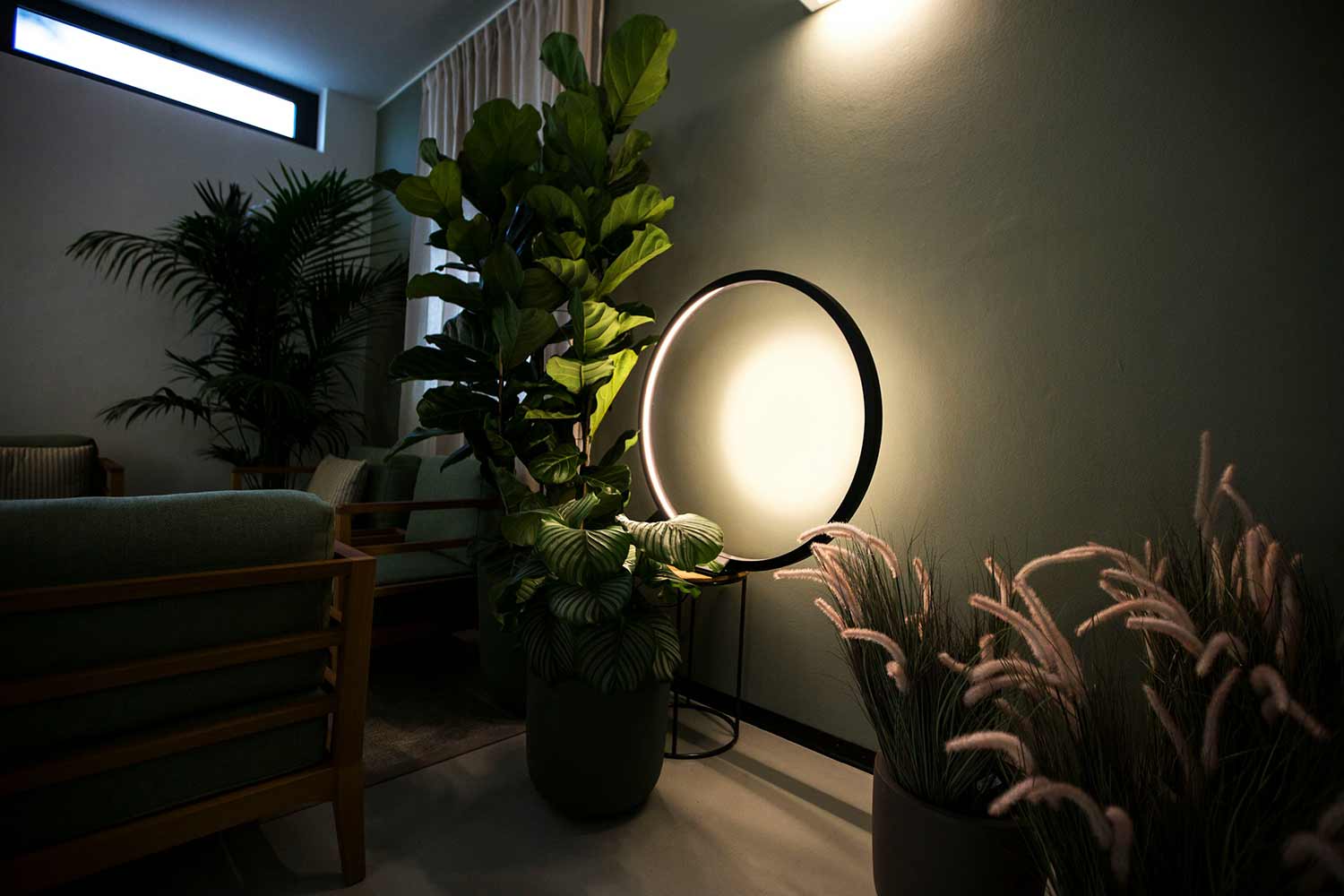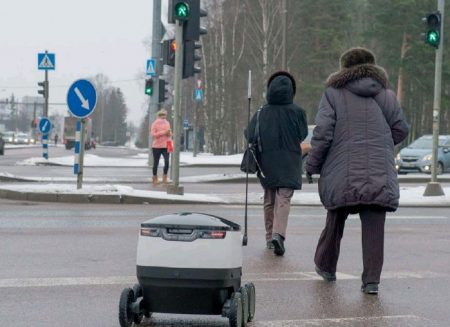
In 2022, delivery robots and scooters are part of the urban landscape in Tallinn, Estonia. Starship robots circle the city, delivering food safely, securely, and above all: autonomously, thanks to advanced technology that relies on “a mixture of computer vision and GPS”. Less technologically advanced are the scooters – urban micro-vehicles, that appear in various spaces and deliver people from one space to another. Here, Bolt and Tuul – two Estonian technology companies – dominate the market. Robots as well as scooters can be booked through designated applications and are making lives more comfortable and efficient. But how come people treat robots much better than scooters?
*Infobox: Starship was founded in 2014. Their earlier robot delivery versions were tested and implemented, for example, in Milton Keynes or the Wisconsin Madison University – two urban areas following a strong grid layout. The service was launched in Tallinn in 2021.
An observation

It is a Saturday afternoon in the Telliskivi area in Tallinn. Telliskivi is a former industrial area that has been converted into a hip café and bar consortium. Along its main street, Telliskivi, is one Starship robot standing, making its way up along the pavement through the freshly fallen snow. Seemingly a bit struggling, a pedestrian comes to help before it eventually proceeds to deliver food. People sitting in a nearby café are similarly smiling through the window at this strangely autonomous technology, that, at best, reminds them of the Mars Rover or a real-life version of Wall-E. The pedestrian, an Estonian man named Taivo, does this on a daily basis. In a recent interview with a local newspaper, being asked why he helps the robots, Taivo states: “They are so cute and [even] speak Estonian.”
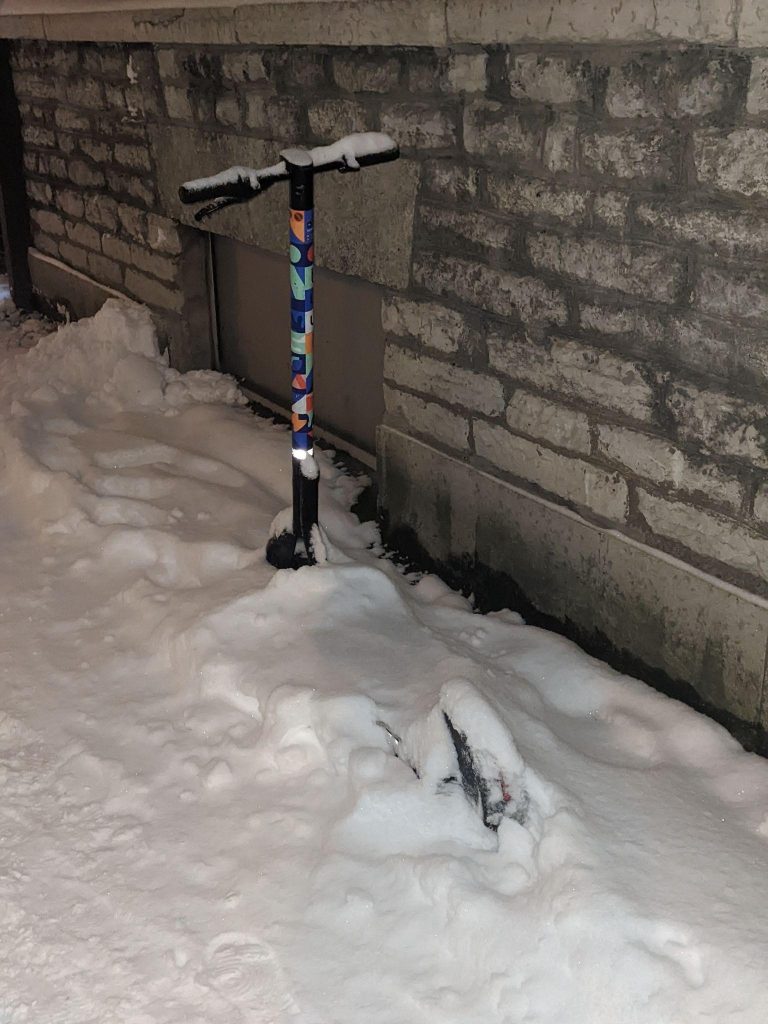
Not far from this scene are five mobility scooters lying on the pavement. Some of them seem new, others have scratches and scars giving testimony of vandalism. I am renting a Tuul-scooter because Bolt stopped operating in winter and make my way home. I remember when these scooters appeared, how fascinated I was by their ability to accelerate and seemingly float soundlessly through the city. This one I am on now makes strange noises and almost resists moving forward after having stopped at a traffic light. The handlebar is ice cold, having laid in the snow on its side.
*Infobox: Bolt makes vehicles for hire, micro-mobility, car-sharing, and food delivery. The Estonian company operates since 2013 but the scooters have been launched in 2019 in Tallinn. Tuul is an eco-friendly Estonian technology company that focuses solely on scooters. Different from Bolt scooters, they operate in Winter, however with limited availability and decreased acceleration.
A human touch?
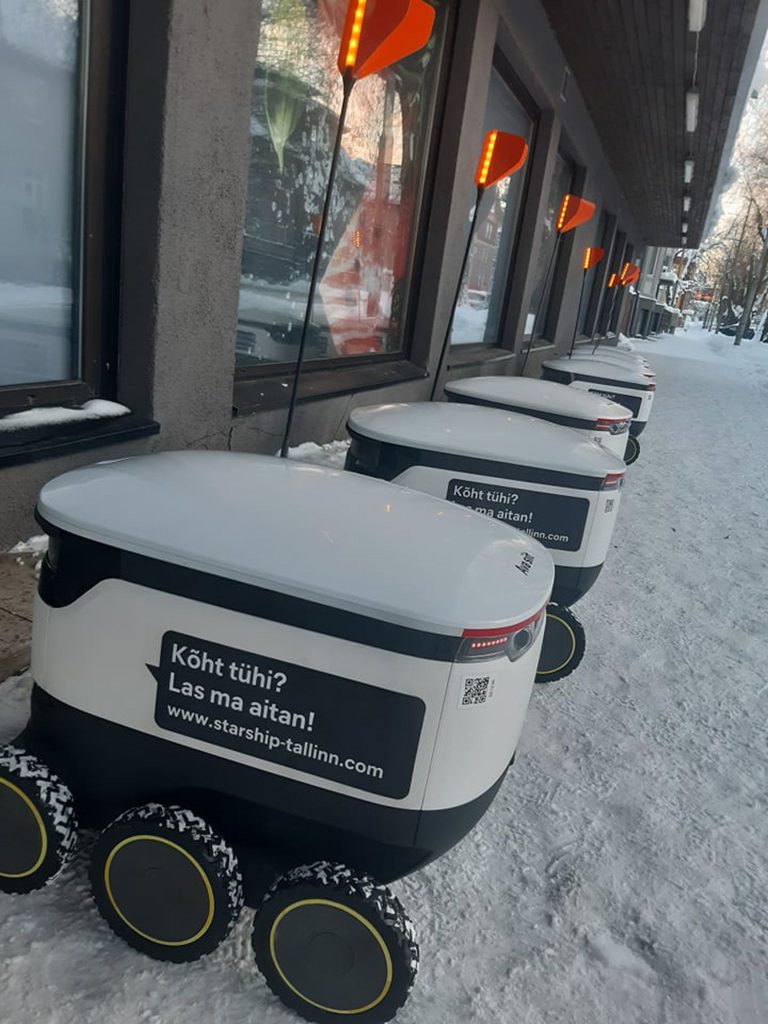
Starship robots are treated carefully and joyfully and have almost become tourist attractions, whereas scooters are often abused and mistreated. This particular starship robot in the video has a special Christmas livery and is tagged ‘Rudolph’, the youngest of Santa Claus’s reindeer. The scooters are distinguished from one another mostly by the range they have left on the battery, sometimes leaving people angry and stranded halfway home. Based on this, it may be easy to imagine that people can relate more to a tiny self-driving food delivery robot with a face painted on it than to a rather characterless scooter as it exists in most cities around the world.
Another of the reasons for the different treatment of the Starship robots might be their purpose: They deliver food to someone unknown to us and hence we interfere helpfully and respectfully. Beyond that, is the ability of Starship robots to drive autonomously, indicating some smart technological ‘brain’ inside. It is this ability to move autonomously that may help us build relationships and in some way humanize these robots, especially if they get stuck and their robot voice asks us for our help. Through such everyday micro-objects, we start to understand what it takes to establish a more harmonious co-existing with technology: It may need to be in some ways like us humans. This includes not being perfect but making mistakes or being vulnerable.
Character follows form
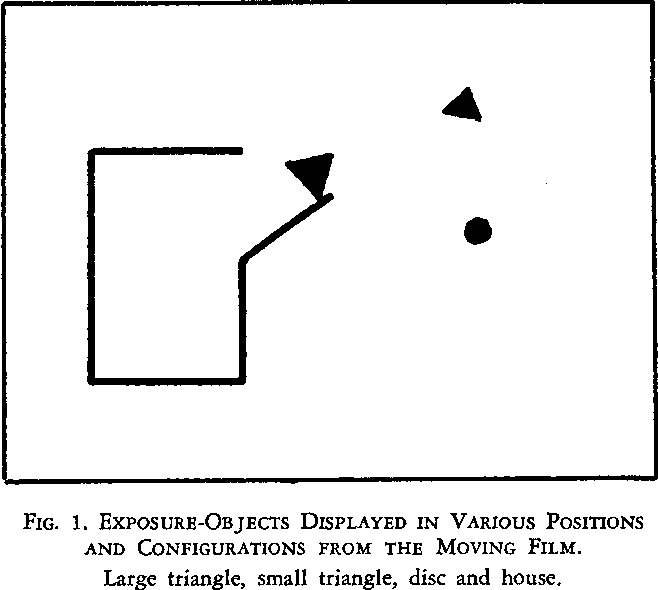
But also the shape of the Starship robots might play a much more important role than one could assume: Psychological research has demonstrated for at least 80 years, how characteristics and behavioral attributes are attached by people to even simple geometric forms. Two psychologists, Heider and Simmel, have shown in 1944, how a simple animated video showing a moving large triangle, a small triangle, and a circle can evoke viewers to not only capture what is shown in a narrative or story but also attach character traits to the different shapes. The bigger triangle is often described as a bully, the smaller one as heroic, and the circle as dependent and helpless. “The classic animation experiment by Heider and Simmel (1944) revealed that humans have a strong tendency to impose narrative even on displays showing interactions between simple geometric shapes. In their most famous animation with three simple shapes, observers almost inevitably interpreted them as rational agents with intentions, desires, and beliefs (That nasty big triangle!).” states an article.
Other research shows, for example, how sound and forms are associated. In 2001, VS Ramachandran and Edward Hubbard asked a group of participants to guess which of the two figures was a Martian ‘bouba’, and which was a ‘kiki’. One of the forms had curved smooth edges, and the other one appeared to be more like a star. Most participants gave the curved smooth form the name ‘bouba’ and consequently the star-shaped form the name ‘kiki’. This association between a sound and a form, as well as between behavior and character portrays the Starship robot – with its soft edges and high-pitched child-like female voice – as a friend and in some ways dependent entity. The scooters on the other hand have a lower female voice, appear more edgy and functional, and do not even pretend to act in any way human – no greetings, no goodbye, just a “ride started” upon unlocking.
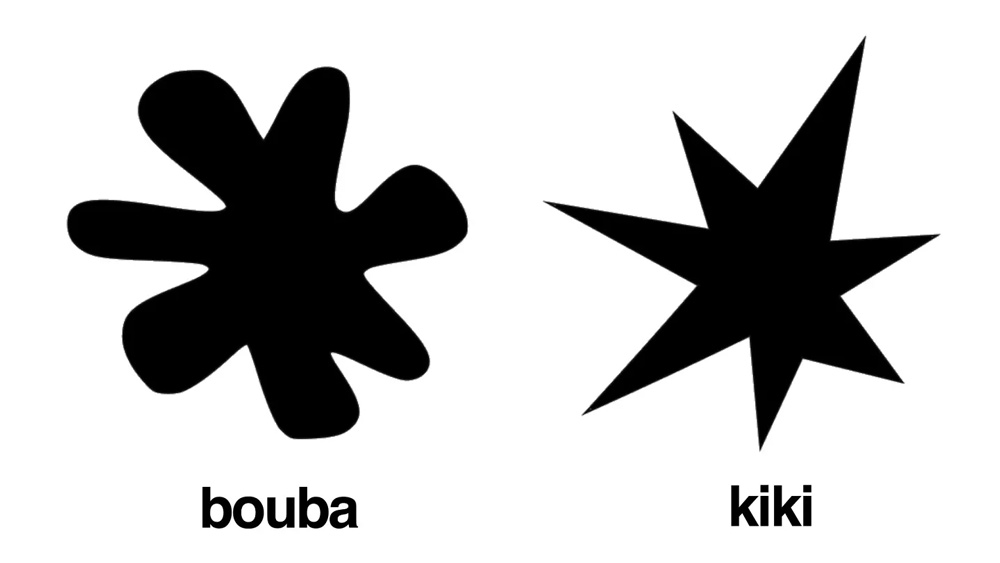
In architecture, scientific studies on curvature and contour are limited. Still, a research paper published in 2013 suggests “[…] that participants were more likely to judge curvilinear than rectilinear spaces as beautiful.” But “[…] contour may have a genuinely stronger effect on like or dislike for curvilinear spaces than it has on a desire to actually enter or exit these spaces.” After all, how a building, robot, scooter, or any other object is perceived may not entirely depend on its form, but in the words of Le Corbusier (1948): “The business of Architecture is to establish emotional relationships by means of raw materials” and as such, robots and scooters should be developed and seen. Based on the purpose of technology, their design needs to evoke this relationship-building and care by its users and anyone who crosses its path.”
To care or not to care
In this preliminary analysis, care is presented as a design element. If no such care can be achieved between people and the technological object, such object may fall into disrepair. But the data for trashed scooters or Starship robots is thin: In 2018, The Guardian wrote a report about a Californian lake, in which scooters are finding their last rest, titled poignantly “Stolen, burned, tossed in the lake: e-scooters face vandals wrath.” But also when analyzing the destruction of these micro-objects, scooters appear to be stolen or burned (by people), whereas Starship robots are, if anything, involved in an accident, such as the following video from March this year showed. Note the language used in the title:
Poor little guy just wanted to deliver food to people 🙁
— WeeklyRobotics (@WeeklyRobotics) March 3, 2022
Source: https://t.co/uTZ3W1DcDx#robotics #fail pic.twitter.com/17aZ5F2w2x
Without a doubt, more examples of that kind could be found, but it is time to ask about the general implications of such human-technology behavior for the future of cities. More hard data reveals, for example, another interesting layer: Starships robots come in at less than 2000$, according to an older article by CNBC (2015). Electric scooters vary, but around 500$ might be realistic, based on a number taken from the scooter company Bird and general retail market prices (Ark Invest, 2019).
Whereas the lifespan of a Starship robot is less clear, Bolt scooters might last up to 60 months according to Bolt, whereas conventional (non-modular designs where parts cannot be replaced easily) last around one year (2021). Keeping these numbers in mind, one may conclude that scooters, on average, may last shorter than the robots and are relative to that, expensive. Additionally, based on the product price, a ride with a scooter is highly affordable with only a few cents per minute.
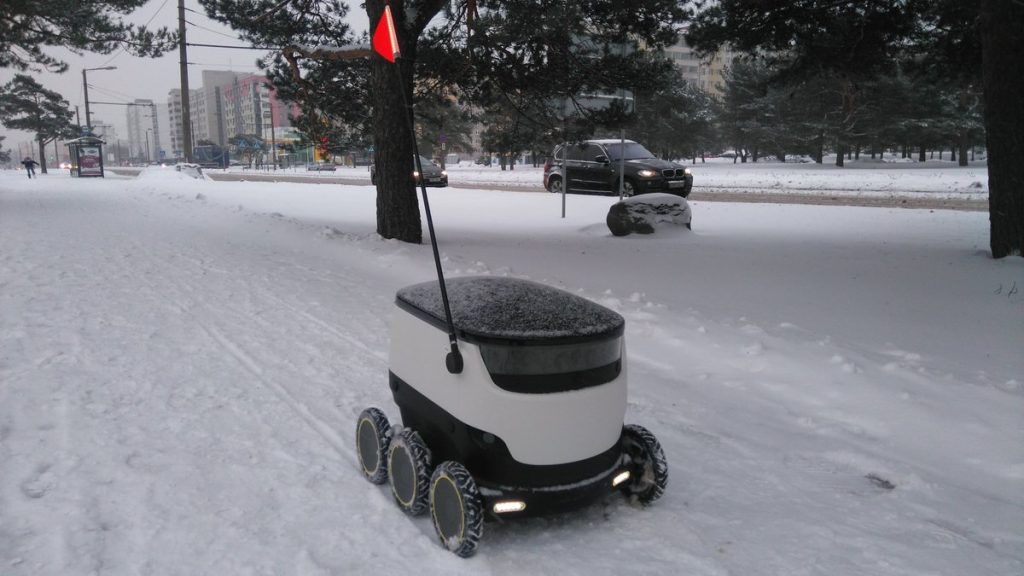
Would it therefore not be desirable to be able to personalize the scooters more? If they had names and different colors or could be rented for a week, would that not make a difference? More designated parking spaces, a scooter lane, or benefits for good treatment may also be options. However, a more wholesome integration of such micro-objects into our everyday life, within which these objects are treated carefully, thoughtfully, and therefore sustainably, needs more efforts from companies to understand human behavior or psychology. Especially, how we as humans, build relationships with technologies and how they can be maintained over time.
Finally, in an article called “Human-Robot Interaction: The Psychology of Working Together“ the author Vanessa Van Edwards states: “If we want to integrate robots into our workplace and lives we have to love them in some capacity. We have to be willing to invest in their repairs, care for their maintenance and be patient with their technological hiccups. Programmers should want to inspire parent-like love in their robot’s human counterparts. To encourage this relationship, I think robots should be programmed to recognize and respond to the 5 Love Languages”.
Therefore, a design based on research on aesthetics, more options to modify and personalize, and designated spaces to move and the park could support a more compassionate human-technology interaction. After all, technology is there to support us and in return, it needs a little support from us.



